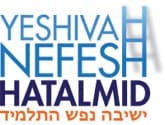The contrast between Parshas Tetzaveh, where we learn about the Mitzvos regarding the garments of the Kohanim, and what many (unfortunately) do on Purim is striking. The fact that the Torah gives specific instructions on dress in the holiest place in the world tells us that the way we dress is an avodah. The clothes of the Kohanim simultaneously
- Represent who they serve, their station, responsibilities and honor (How others see us).
- Project an image of what we are meant to look like, even if that’s not how we look or feel on the inside (assist in self-control).
- Reflect the inner self (How we see ourselves).
For many, especially teens, the emphasis is on #3. We start looking inward, unsure of who we are and try to define ourselves through our dress, convincing ourselves first who we think we should be and look like, and then try to reflect that outward (#1). We call this “looking cool”. This reinforces low self-esteem, fosters the paradox of “everyone is simultaneously looking at me and judging me while also taking no notice of me”. It makes teens very sensitive about how they dress and crazy about specific labels and styles. All 3 persepctives are out of sync. Unfortunately, this is rampant and extreme on Purim, where everyone vies to have the “coolest costume” that grabs the most attention.
What dressing should look like:
A healthy person starts at 1 or 2, depending on their level. Only after harmonizing these properly does a person achieve #3, as the way others see him and the way others should see him align, it becomes the actual person, their inner self. This is called growth and maturity.
The Avodah of Purim is special because it gives us the opportunity to start from #3, the inner self, and work outward. What we wear and how we act on Purim, on some level, is our true self shining outward. It is difficult and the right conditions to foster this opportunity happen only once a year. This is dangerous for most, because we don’t spend the year with the right Hashkafa towards our clothes and chitzonius, and so at best miss the opportunity of Purim and at worst cause actual damage to our inner selves. As a friend of mine often says, it takes a year of preparation to experience Purim properly, the way it was meant to be. This fits with the fact that the seder of ‘Hilchos Chag B’Chag, Torah She Baal Peh (the inner Torah), makes its Sium on Purim. It is why Purim contains aspects of every chag and is in the last month of the year. Purim is the culmination of all the work we have done on ourselves since Pesach. Purim is here, lets use it to learn about ourselves, and put that towards Motzei Purim beginning the job of preparing ourselves for an amazing Purim next year.

Leave A Comment